July 20, 2022:

We sailed into Klaipeda, Lithuania, the morning of July 20, 2022. This is the port city of Lithuania, and it’s weird to think that Kaliningrad, Russia, is just 15 miles away. Our excursion today takes us on an e-bike ride of the Curonian Spit, a 99 kilometer strip of sand which lies across a narrow waterway from Klaipeda. Most of this spit belongs to Lithuania, and the Lithuanian town of Nita is the closest town to The Russian Federation. Historically, Kaliningrad belonged to Germany and was known as Konigsberg, but the USSR took ownership after World War II. The area around the port of Klaipeda was also part of Germany and was called Memel, but it was annexed by Lithuania in 1923.

If you read yesterday’s post, you already know that for about from three centuries, Lithuania and Poland formed an empire which was the largest in Europe. Thanks to the invaluable lectures of our onboard diplomat, Hugh Neighbor, we now have a much clearer view of the state of the Baltic states in today’s world. All three countries briefly enjoyed independence after World War I, but Hitler gave them an ultimatum in 1939, and they surrendered to Germany. After World War II, all three countries were forced to become Soviet Socialist Republics as part of the USSR, but following the “Singing Revolution” of the early 1990s, all three Baltic countries reclaimed their independence. They all promptly joined NATO, and shortly afterward, the European Union.







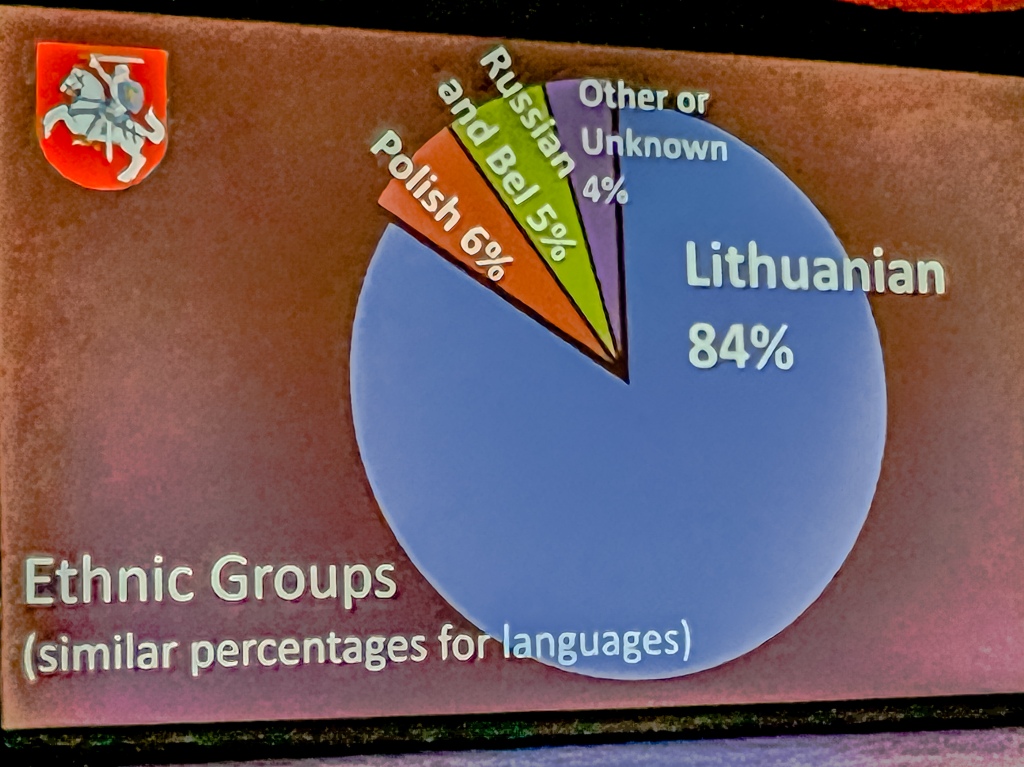
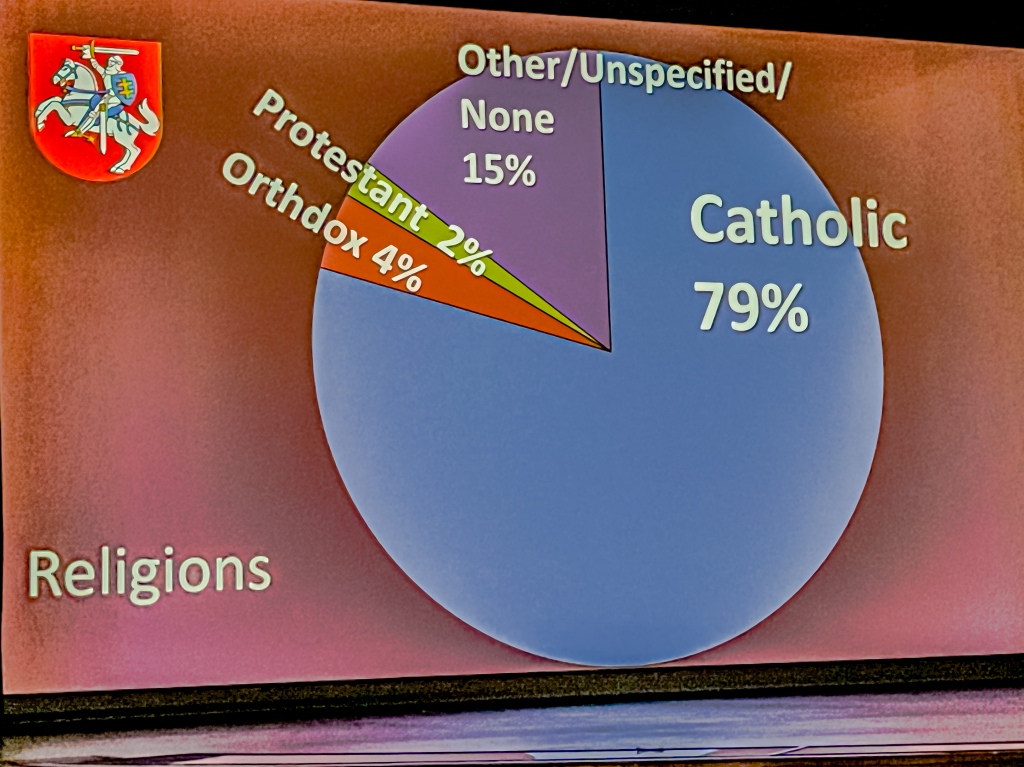
We started our tour in the port area, where our lovely and functional e-bikes awaited us. We rode over to the old harbor area, where we had to wait for the Chain bridge to be manually closed. It dates back to 1855, but the most photographed item in this area isn’t the bridge, or the remains of the old castle and its ramparts nearby; it’s the statue of the “Black Ghost” on the dock next to the bridge which has become a selfie mecca.

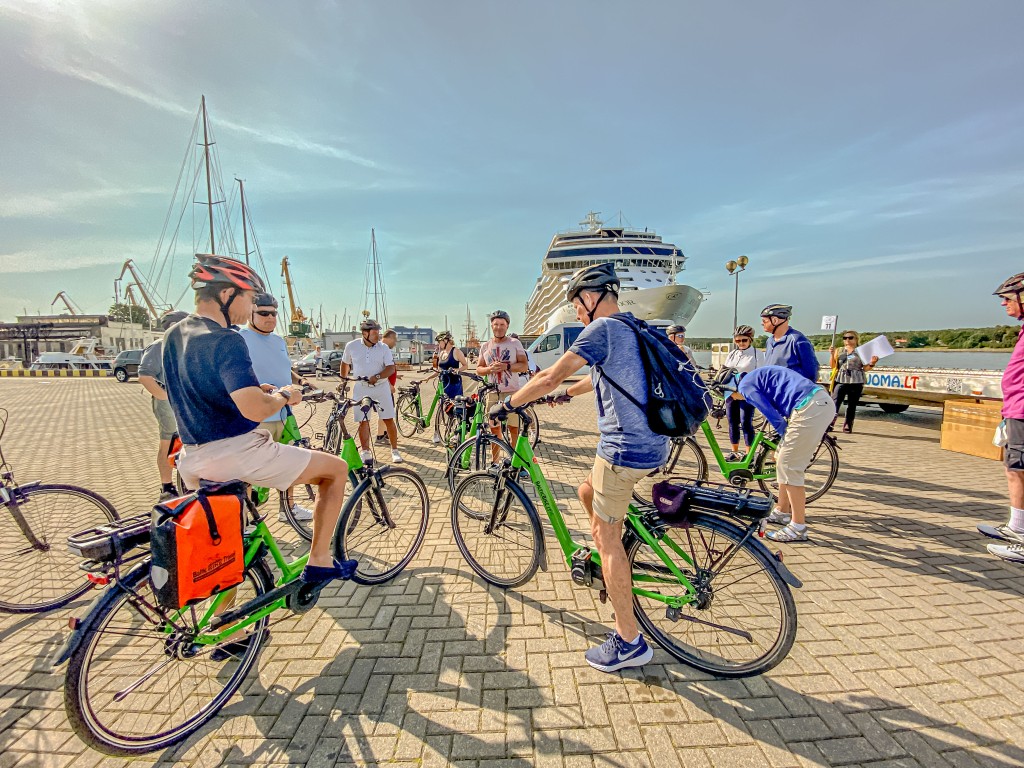
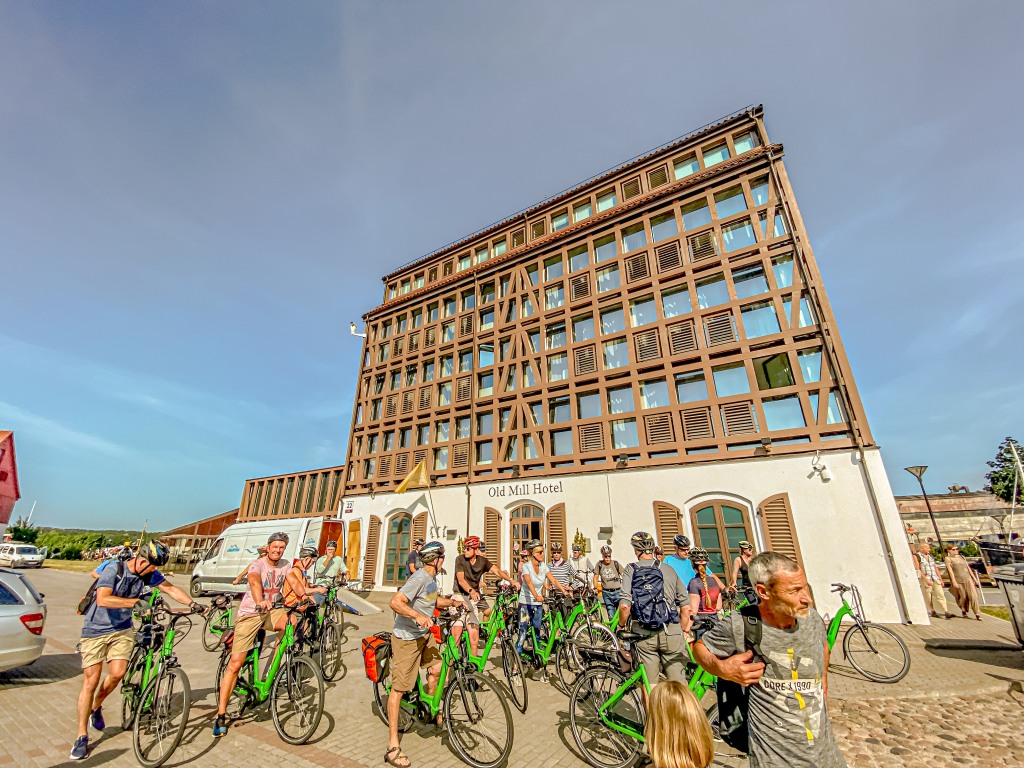

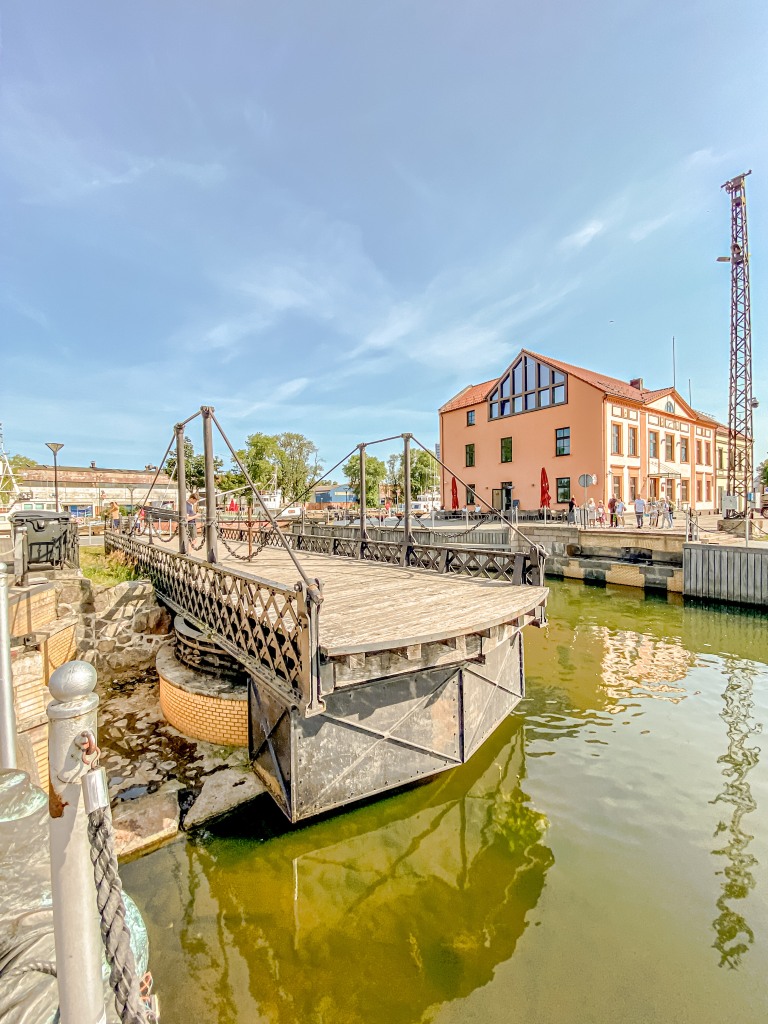

We took a ferry over to the Curonian Spit, and got an orientation of where we were, and where our ride would take us. Basically, there are great bike trails all over the Spit, which meander through forests which have been carefully built up to prevent the sands from blowing all over the structures on the Spit and the houses in Klaipeda. Our circuit took us over to the beaches on the west coast. We could se Kaliningrad to the south, but this was as close as we got. We had a couple of good vantage points to look over the miles of beautiful beaches, and then we stopped for a beer. On our way back, we rode around the buildings housing the Aquarium and the Maritime Museum. There is a water structure outside which has become a favorite resting spot for these HUGE pink pelicans (a pouch of pelicans). Then we took the ferry back across to old town Klaipeda, where our bike guide gave us a brief tour.








Klaipeda was heavily bombed in WWII, although there are still some historic buildings standing. You can see the remains of the fort and the castle built in the 13th century near the harbor (although we didn’t make a stop there) there are also some buildings from the 17th century standing in the town center (mostly Teutonic half-timbered structures), but the city center suffered the fate of many medieval cities in that the city caught fire and burned several times. There is also a palace on the inner canal where, in the time of Napoleon, the German royal family of Frederick William III of Prussia fled, and lived there for a year. That palace is now the Town Hall, and the house where the Mayor lives.


We went first to a central square which houses the building where Hitler made his proclamation that Lithuania (and the other Baltic states) must surrender to Germany. Today, this area is called Theatre Square. As you may have noticed, there is lots of street art in Klaipeda. For example, this statue is dedicated to Simon Dach, a poet in the 17th century, and a celebrated Lithuanian author. The statue, in the shape of a girl, pays tribute to the main character from one of his most famous poems. We went into a street off the square which is the artisan area, and there’s a lot of magic here. We went first to the Magic Gate. All the people carved on the gate represent all the different types of workers in Klaipeda. The inscription says, “Knock on the wood three times, and make a wish.” We also saw a bronze statue of the Magic Mouse, and the “cat with the face of a gentleman”. And that concluded our brief tour of Klaipeda.




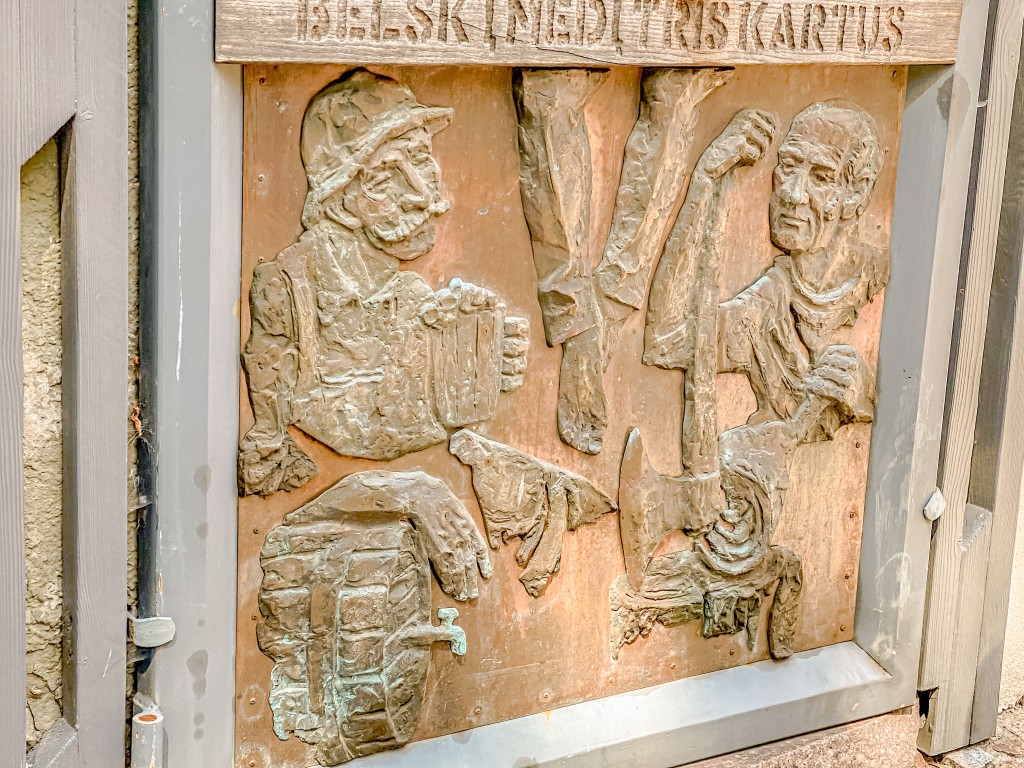



But the weather was so nice that Jim and I spent the rest of the afternoon on our balcony watching all the boaters go by. We’re pretty sure that all the people of Klaipeda were out in a boat that afternoon, as it is rare to get weather this beautiful here, even in the summertime!


